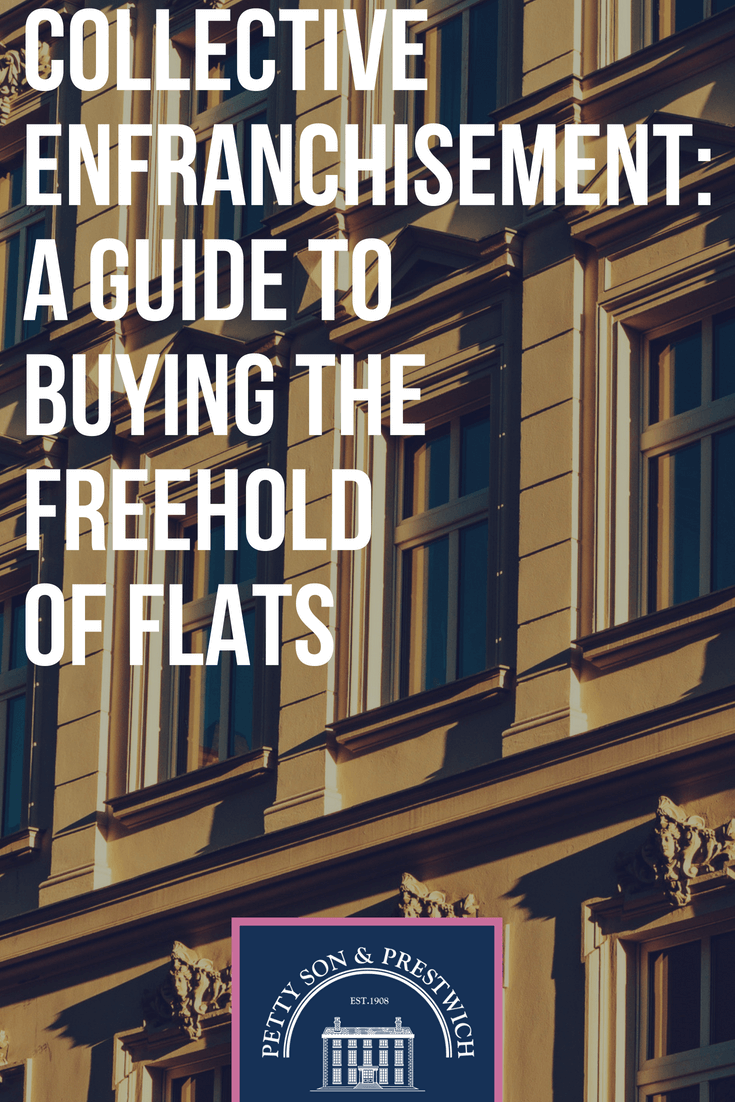Leaseholders living in blocks of flats have had the right to purchase the freehold of their building as a group since 1993, and doing so can provide them with a number of advantages. The commonly used term for this process is Collective Enfranchisement and, in this article, we'll explain exactly what the benefits are, who's eligible, and what the basic process for buying the freehold of a block of flats entails for prospective purchasers.
What is Collective Enfranchisement?
As laid out above, Collective Enfranchisement is the right to buy the freehold of a block of flats from the freeholder, providing eligibility is met.
The process has been possible since the introduction of the Leasehold Reform Housing & Urban Development Act 1993 (as amended) and it is growing in popularity as leaseholders become more aware of the benefits associated with acquiring the freehold of their building.
While the idea may be simple in principle, the process can often be complex. Undertaking Collective Enfranchisement is a big step, so leaseholders would be well advised to seek out the help of solicitors and surveyors who specialise in the field if they decide to go ahead and stake a claim for the freehold of their block.
What are the benefits of Collective Enfranchisement?
There are many advantages to Collective Enfranchisement, but the key one for many leaseholders will be the ability to grant themselves longer leases with a peppercorn ground rent. Extending the lease of your property will help boost its value, so it's easy to see why gaining control over the lease is so attractive, but the benefits don't end there.
Collective Enfranchisement also gives leaseholders greater flexibility over the day-to-day running of the block as well. Things such as how the building is managed will be under their control, which means they will be free to choose their own contractors and management company rather than have these third parties imposed upon them by the freeholder.
Similarly, things such as the decision over who insures the block will also be under the control of the leaseholders should they acquire the freehold of the property. Therefore, owning a share of freehold could result in lower costs for repairs and maintenance for each participating individual.
What are the eligibility requirements when buying a freehold?
As one would imagine. there are some eligibility requirements that need to be met before you are able to proceed with Collective Enfranchisement. The basic criteria is as follows:
- At least two thirds of the flats within the block must be owned by qualifying tenants. In other words, tenants who were initially granted leases of 21 years or more
- The building in question must not be used for any more than 25% non-residential purposes
- The block of flats must be self-contained (although there is a possibility of eligibility should the change to self-containment be easy to achieve)
- At least half of the flats within the block must agree to Collective Enfranchisement. Blocks with only two flats require agreement from both to proceed
- Leaseholders who own three or more properties within the block will not be able to participate
What is the basic process for Collective Enfranchisement?
In order for leaseholders to purchase the freehold of their block a procedure must be adhered to. The basic outline of the process is as follows:
- Information notice to be served to the Freeholder who will then have 28 days to respond
- Section 13 Notice served on the Freeholder by the Nominee Purchaser
- Landlord has 2 months to respond to the notice and can also request additional information within 21 days of the notice being served
- Counter-Notice served by Freeholder within 2 months of receiving the Section 13 Notice
- If two months passes without a Counter-Notice being served, the Nominee Purchaser must apply to the County Court within six months
- If a Counter-Notice is received, the Freeholder and Nominee Purchaser have six months to negotiate
- If negotiations fail, either the Nominee Purchaser or the Freeholder can apply to the First Tier Tribunal within six months of the Counter-Notice being received
- Premium agreed and freehold is purchased
To reiterate, this is a basic outline of the Collective Enfranchisement procedure and specialist advice should be sought from a solicitor with an in depth knowledge of purchasing freeholds before process begins.
